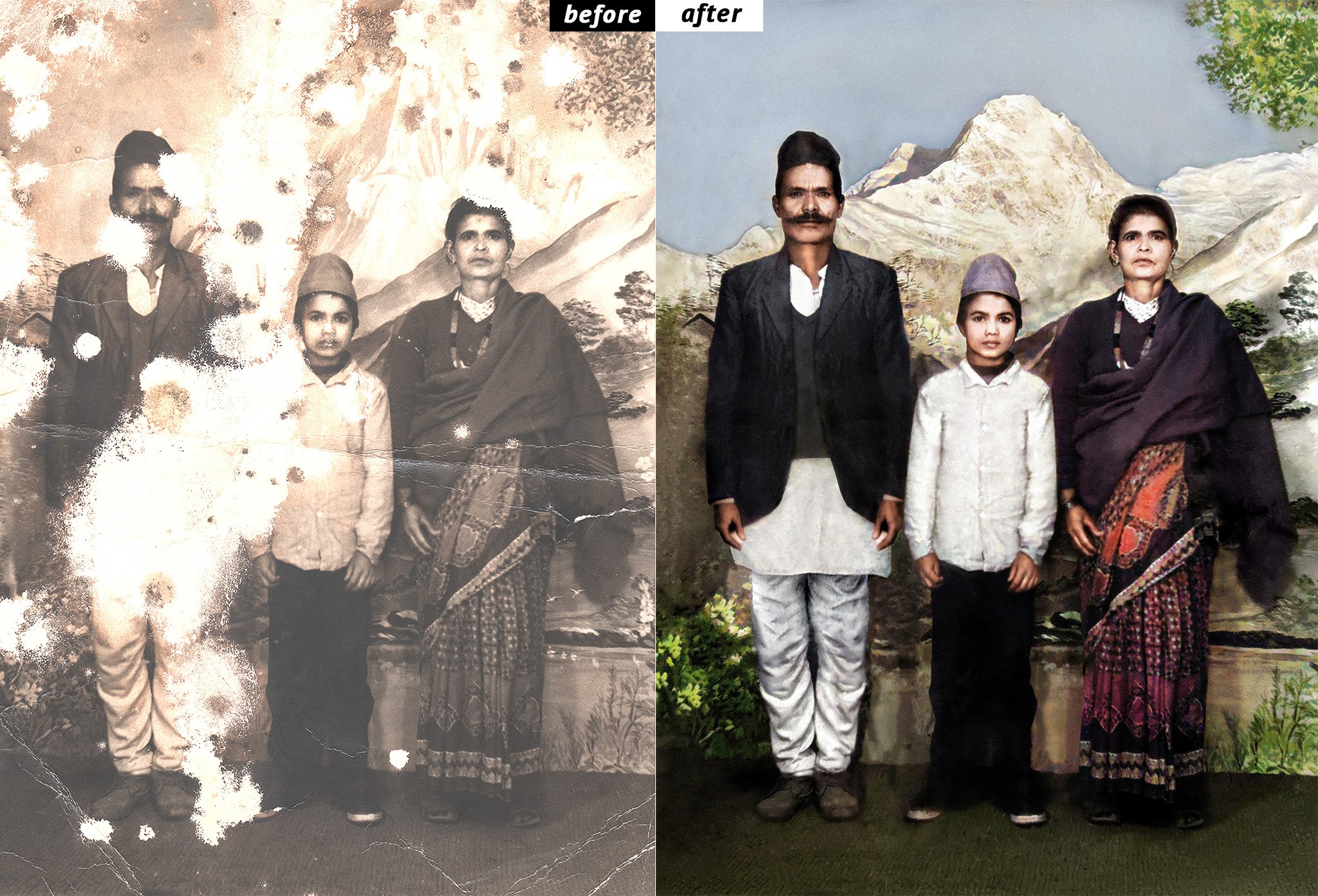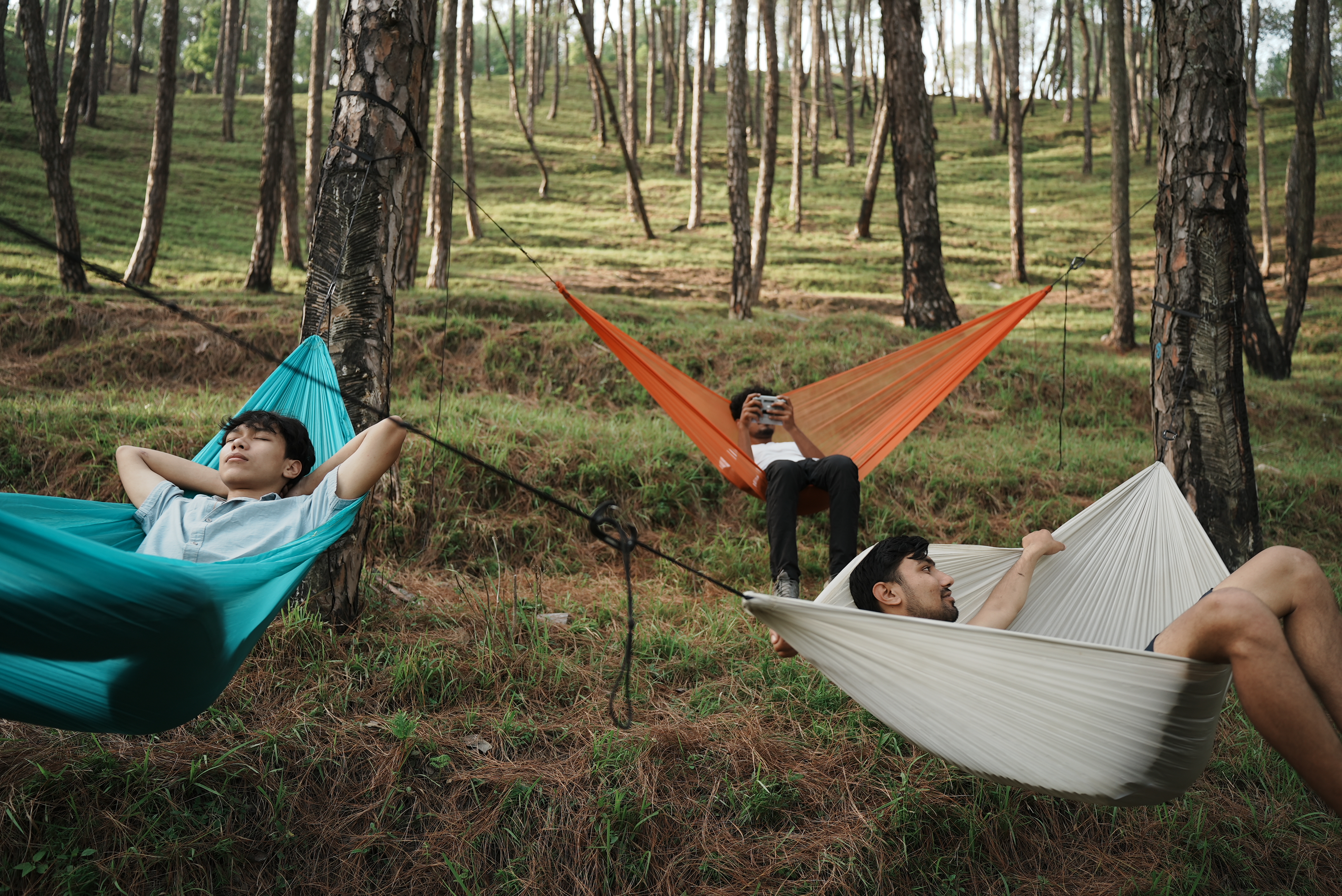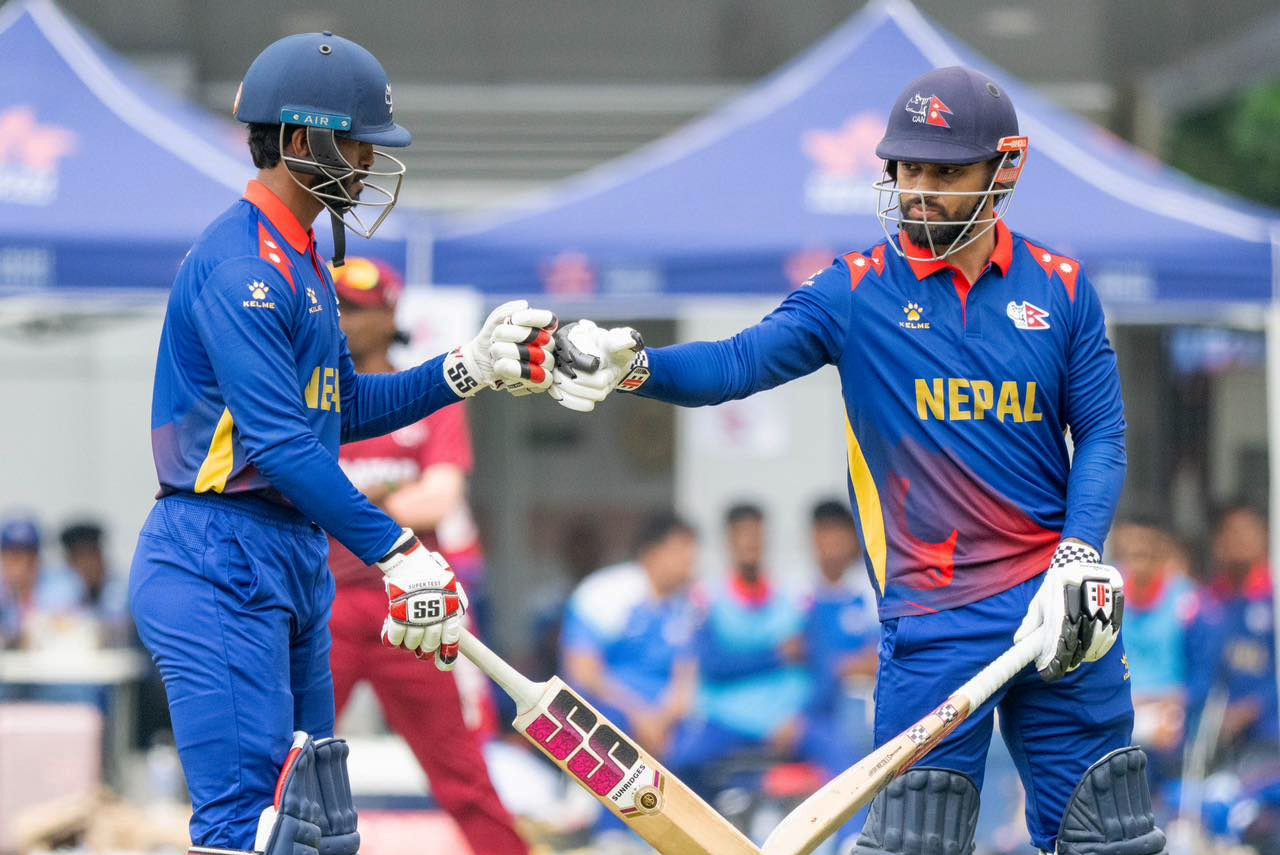Dipesh Maharjan would glance at an old frame in the room while walking in and out. Yet, he would often ignore it. When there was a lockdown due to the rising Covid cases in 2020, he was stuck at home and he once again glanced at the frame that held a photo of his grandparents. This time, he could not ignore it because he had time.
He took out the photo, scanned it, and, with Photoshop on the computer, started making corrections. Happy with the results, he also got positive feedback after he posted the photo in Men’s Room Reloaded (MRR), a closed Facebook group.
Months later, he started Photo Restoration Nepal, a business service that would help people correct old photos to give them fresher looks.
Photo Restoration Nepal is another unique business that was born during the pandemic although this underrated attempt to revive old memories has not fully bloomed as Maharjan himself is practising some restraints while enjoying life and creating his own new memories.
To restore or not to restore
Everyone has a collection of old photos either in an album or in some dusty old corners of the house. Maharjan, with Photo Restoration Nepal, is on a mission to give people back their memories to almost everyone. It is just “almost” because he has to filter and draw a line regarding which photos can be restored and which are beyond repair meaning not can be catered to.
“When people see that I have restored the photos, they are filled with hopes that any photo can be revived as new. I get pings on my page almost every day with people requesting to restore their old photos. But, I have to draw a line when the photos have no significant features that can be restored.”

Talking more about how he exactly chooses photos to restore, he says, “I analyse the photo before I take the project. The first things I see are the eyes. If the eyes are significant in the photo, it holds more probability that it can be restored. If not even one eye is prominent, it is beyond repair.”
Yet, he adds the fact does not stop people from making emotional requests to Photo Restoration Nepal. “Eyes are a crucial detail. I cannot just borrow eyes from others and use them in the photo. It changes the face of the person and then people wanting to restore the photos become pointless. Even when I try to make people understand, they still complain if I can restore other photos, why not theirs.”
“The photos are usually of people who have passed away and usually only one of such kind. So people are connected emotionally to it and anchor high hopes. So unwillingly, I have to turn people down even though it is a rather difficult task to do.”
The art of retouching
“But rather simple issues like termite bites, dust, spots, holes, tears, faded details and colours can be retouched and restored. Turning black and white photos into colour is easier too. Depending on the complexity, however, it takes me a couple of hours to a week to finish the editing. The lines and corners of eyes, nose and mouth are more complex to restore.”

In this process, Photo Restoration Nepal stresses the idea of photorealism and edits to keep the person alive in memories. “Today, anyone with a camera is a photographer and people have learned a certain level of photo editing skills too. But, simple editing differs from techniques of photo restoration because one has to edit as per the standards of photorealism.”
“Photorealism is not taught anywhere; it is rather a judgement of a person editing who has to make sure that the photo looks realistic and not morphed. One needs not just the editing skill but also the knowledge of human anatomy, how female and male faces differ, learn the use of the ‘local dodge and burn’ tool in Photoshop and years and years of practice.”
Hence, by adding the extra layer of complexity, he has created a new business at Photo Restoration Nepal. Because the process is quite complex, he is working alone in it. “There are a few photo studios and individuals who have attempted the skill. Yet, they have found themselves to be limited and do not practise photorealism. My friends, who help in the process sometimes have the editing skills but not on par with the photorealism standards.”
But, he claims he has gained and honed his skills after years of practice and mountains of trials and errors.
Man with many hats

The founder of Photo Restoration Nepal, a Kirtipur-based digital artist, was an inquisitive child and says his childhood would be spent mostly in front of the computer.
“Either at school, a local cybercafe or at home, I would just experiment with the computer. I first learned to type and paint on the computer when at school some 15 years ago. I was rather good at it,” an excited Maharjan says, “But then, I discovered Photoshop on my computer and then I became fascinated by it. Then, I started exploring more with the tools and techniques, with some help from YouTube.”
He continued with his fascination and then even learned web designing and graphical user interface (GUI). And much like Photoshop, he learned these programs through experimentation, all on his own. “I got fairly good and I even designed an interface in a school exhibition where people could log in and explore. And I would make viruses to prank friends.”
When he completed his school though, he ventured out and started exploring photography instead. “I first started working at e-commerce website Nepbay doing product and fashion photography (along with post-production editing) and at Socheko [dotcom] as a trainer for their in-house people and taught advanced editing skills. Then, for the next three years, I joined Metaphor Fashion as a fashion photographer.”
Meanwhile, he joined a bachelor of arts in computer application (BCA) course, but rather than the coding aspect, he liked graphics more so he dropped and continued his practice on his own, editing photos and sharpening his skills along the way.
Some grievances
Since the day he went to Men’s Room Reloaded and started Photo Restoration Nepal, he has received numerous requests from people asking for his help to restore their old memories, nationally and internationally. But, people’s lack of knowledge about his art troubles him a bit. “People think that it is all about opening the photo on my computer and the job is done.”

“They are clueless about the time it takes. I posted some videos on my page where I recorded my work. The video is a timelapse, but people think that’s all the time it takes me. Likewise, some others have disappeared after I have worked hours on the photos. So, there are some complaints here and there,” he adds.
He says people have also complained about the price Photo Restoration Nepal charges. “I charge an average of Rs 500 to 1,500 per photo depending on the complexity and the time it takes. But, many complain that it is rather expensive, which is not at all true. People abroad take 100 per cent more than that.”
“Nonetheless, I do not plan to increase prices yet because I get major inquiries and work from college students who are unlikely to have the money to pay. I do not have obligations to provide to anyone either.”
Also given the amount it takes him to work on one photo, any help from others would help him expand Photo Restoration Nepal. But, he has not yet come across anyone who can help him in his work and is working alone. “I was not someone who could work 9 to 5 or work under someone. But, since I started this, I have been feeling more liberated than ever. I have time to spend with my family and friends, travel and even freelance as a photographer as I see fit. So I have no regrets.”
Soon, he plans to open a studio in Kirtipur so that he can dedicate his time and train others too, possibly scaling up his business.
But because he works on his own time as of now, he completes a limited amount of work. Regardless, he is enjoying Photo Restoration Nepal. “Each photo is unique and so is their complexity. So it is challenging and fun to figure out. I am enjoying retouching photos and giving people a reason to smile and cry happy tears.”
































